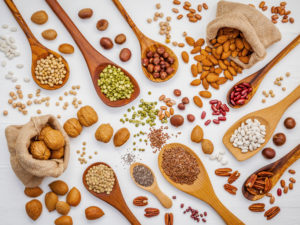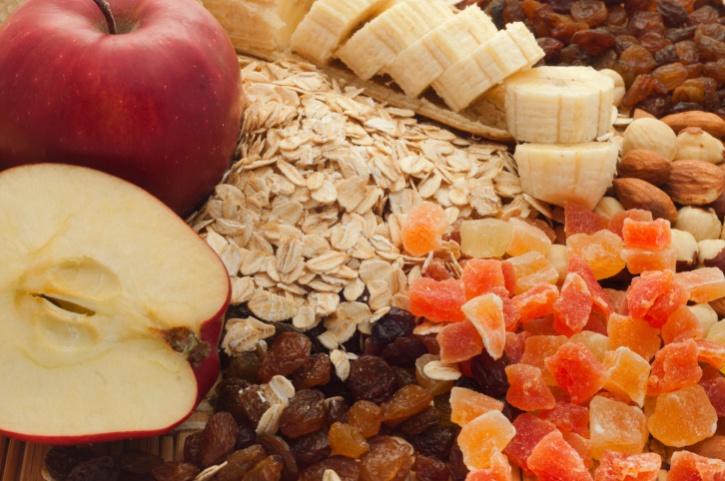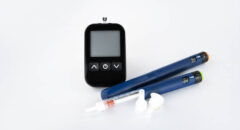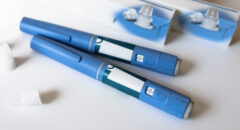 It is well known that a high fiber diet helps lower cholesterol and reduce heart disease risk. But studies show that people with diabetes who consume high-fiber diets also have lower blood glucose—also called blood sugar and insulin levels. And for those with pre-diabetes, fiber helps prevent the onset of type 2 diabetes. Unfortunately, many people with diabetes are not getting enough fiber to see these benefits.
It is well known that a high fiber diet helps lower cholesterol and reduce heart disease risk. But studies show that people with diabetes who consume high-fiber diets also have lower blood glucose—also called blood sugar and insulin levels. And for those with pre-diabetes, fiber helps prevent the onset of type 2 diabetes. Unfortunately, many people with diabetes are not getting enough fiber to see these benefits.
What is Fiber?
Fiber is the indigestible part of any plant food, including the leaves of vegetables, fruit skins, and seeds. There are two types of dietary fiber, soluble and insoluble, and most plant foods contain some of each kind. Studies have shown that soluble fiber (at least 6 grams (g) per day) is particularly important for improving blood glucose control.
Fiber slows digestion and the rate at which carbohydrates and other nutrients are absorbed into the bloodstream. This action can help control the level of blood glucose by preventing rapid rises in blood glucose following a meal.
Oats have more soluble fiber than any other grain. Foods rich in soluble fiber include oat bran, oatmeal, amaranth, barley, beans, lentils, peas, rice bran, sweet potatoes, citrus fruits, strawberries and apple pulp and flax seeds.
However, eating a wide variety of high-fiber foods—whole grains, fresh fruits, and fresh vegetables—will help ensure that you get an adequate supply of all types of fiber.
The fiber recommendations for people with diabetes are the same as the general public, 14 grams (g) of fiber for every 1000 calories eaten or about 21-25 g per day for women and 30-38 g per day for men. However, the average American is only getting 11 – 19 g fiber per day.

How to fill in the Fiber Gap
If you’re not getting the recommended 25-38 g of fiber daily, it’s a good idea to try and fill in the gap. But don’t increase your fiber intake all at once as large amounts of fiber can cause bloating and gas. Small gradual changes work best. Drinking plenty of water can also help reduce gas, bloating and constipation associated with increasing fiber intake.
The Nutrition Facts Label is an excellent tool for increasing consumption of dietary fiber. The Nutrition Facts Label on food and beverage packages shows the amount in grams and the Percent Daily Value (%DV) of dietary fiber in one serving of the food.
When comparing foods, choose foods with a higher %DV of dietary fiber. The goal is to get 100% of the Daily Value of dietary fiber on most days. And remember 5% DV or less ofdietary fiber per serving is low and 20% DV or more of dietary fiber per serving is high. A good source of fiber contains 3 to 5 grams per serving.
Some good sources of fiber are:
- Whole-grain products, including bread from whole wheat, rye, bran, oat, and corn flour or cornmeal; pasta; whole-grain or bran cereals; brown rice.
- Vegetables such as broccoli, Brussels sprouts, cabbage, carrots and green peas; lentils, dried beans, and peas; sweet potatoes, turnips, and other root vegetables; and all forms of leafy greens—cooked or raw.
- Fruits including apples, bananas, berries, cantaloupes, kiwi, oranges, peaches, grapes, pears, and melons. Also, dried fruits, such as raisins and dried apricots.
- Nuts (peanuts, walnuts, almonds) and seeds (sesame, sunflower, pumpkin).
Easy ways to sneak fiber into the diet:
- Switch from refined to whole grain versions of commonly consumed foods (such asbread, cereals, pasta, and rice).
- Limit refined grains and products made with refined grains (such as cakes, chips, cookies, and crackers), which can be high in added sugars, saturated fat, and/or sodium and are common sources of excess calories.
- Start your day with a bowl of whole grain breakfast cereal (such as bran or oatmeal) that is high in dietary fiber and low in added sugars. Top your cereal with fruit for sweetness and even more fiber!
- Choose fruit (fresh, frozen, dried, or canned in 100% fruit juice) as snacks, salads, or desserts.
- Keep raw, cut-up vegetables handy for quick snacks — choose colorful dark green, orange, and red vegetables, such as broccoli florets, carrots, and red peppers.
- Add beans (such as garbanzo, kidney, or pinto), lentils, or peas to salads, soups, and side dishes — or serve them as a main dish.
- Try unsalted nuts and seeds in place of some meats and poultry.
 Constance Brown-Riggs, is a registered dietitian, certified diabetes educator, national speaker and author of the Diabetes Guide to Enjoying Foods of the World, a convenient guide to help people with diabetes enjoy all the flavors of the world while still following a healthy meal plan. Follow Constance on social media @eatingsoulfully
Constance Brown-Riggs, is a registered dietitian, certified diabetes educator, national speaker and author of the Diabetes Guide to Enjoying Foods of the World, a convenient guide to help people with diabetes enjoy all the flavors of the world while still following a healthy meal plan. Follow Constance on social media @eatingsoulfully








